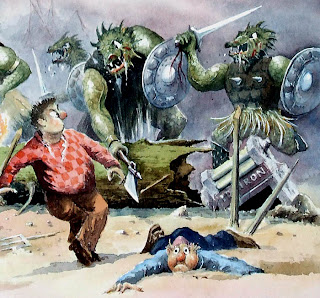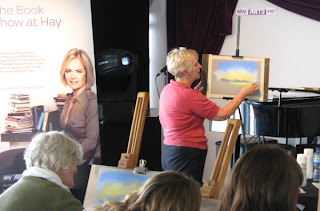The main purpose of this blog is to show the delights of being an artist, helping people foster their creative artwork, and to offer tips on painting, all spiced with as much humour as can be crammed in. The reality so far, has revealed a much greater interest by readers in environmental concern for our glorious countryside, with a marvellous response to my post on Stopping Environmental Destruction on 24th May, and my letter in the national press about the appalling way the landscapes of Mid-Wales are being treated by government.
As a landscape artist I have always tried to put back something into the natural environment in which I work, but sadly, most of the time this means highlighting threats which are now increasing in scale. Nature cannot fight back – well, apart from the volcanic sort, I suppose – and neither can it argue its case; it cannot entice politicians with incentives, rewards or bribes. Many artists feel that protesting in this way will badly affect the response to their work, but for me the countryside is far more important than my painting, but see http://www.artistsagainstwindfarms.co.uk
The photograph shows typical Mid-Wales rolling countryside, the sort that the authorities wish to saturate – and I mean saturate, not just one turbine here and there, not just one wind farm here and there, but obliterate much that is dear to locals and tourists alike, so that all they will see is their hills and mountains through the massive, garish prison bars of the totally out-of-scale wind turbines that are far higher, far more intrusive, and completely alien to anything else in the natural landscape. It will destroy the economy of the region and force people into poverty.
I grew up with a deep love for the countryside. I never questioned that one day it might be lost, that the greed of man, the voracious appetite to control the world by the corporations and their political acolytes might one day destroy our way of life. I have nothing but disgust for the Welsh Assembly and if you feel the same way please tell the first minster: carwyn.jones@wales.gov.uk
What would the world be, once bereft
Of wet and wildness? Let them be left,
O let them be left, wildness and wet;
Long live the weeds and the wilderness yet.
Gerard Manley Hopkins




